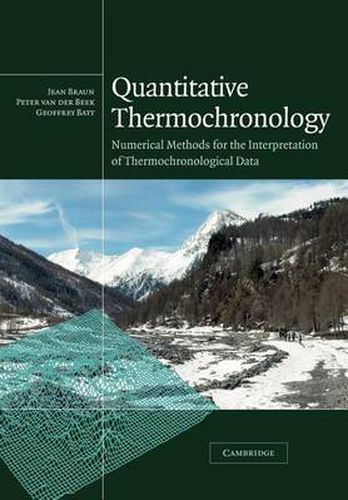Readings Newsletter
Become a Readings Member to make your shopping experience even easier.
Sign in or sign up for free!
You’re not far away from qualifying for FREE standard shipping within Australia
You’ve qualified for FREE standard shipping within Australia
The cart is loading…






Thermochronology, the study of the thermal history of rocks, enables us to quantify the nature and timing of tectonic processes. First published in 2006, Quantitative Thermochronology is a robust review of isotopic ages, and presents a range of numerical modeling techniques to allow the physical implications of isotopic age data to be explored. The authors provide analytical, semi-analytical and numerical solutions to the heat transfer equation in a range of tectonic settings and under varying boundary conditions. They then illustrate their modeling approach built around a large number of case studies. The benefits of different thermochronological techniques are also described. Computer programs on an accompanying website at www.cambridge.org/9781107407152 are introduced through the text and provide a means of solving the heat transport equation in the deforming Earth to predict the ages of rocks and compare them directly to geological and geochronological data. Several short tutorials, with hints and solutions, are also included.
$9.00 standard shipping within Australia
FREE standard shipping within Australia for orders over $100.00
Express & International shipping calculated at checkout
Thermochronology, the study of the thermal history of rocks, enables us to quantify the nature and timing of tectonic processes. First published in 2006, Quantitative Thermochronology is a robust review of isotopic ages, and presents a range of numerical modeling techniques to allow the physical implications of isotopic age data to be explored. The authors provide analytical, semi-analytical and numerical solutions to the heat transfer equation in a range of tectonic settings and under varying boundary conditions. They then illustrate their modeling approach built around a large number of case studies. The benefits of different thermochronological techniques are also described. Computer programs on an accompanying website at www.cambridge.org/9781107407152 are introduced through the text and provide a means of solving the heat transport equation in the deforming Earth to predict the ages of rocks and compare them directly to geological and geochronological data. Several short tutorials, with hints and solutions, are also included.